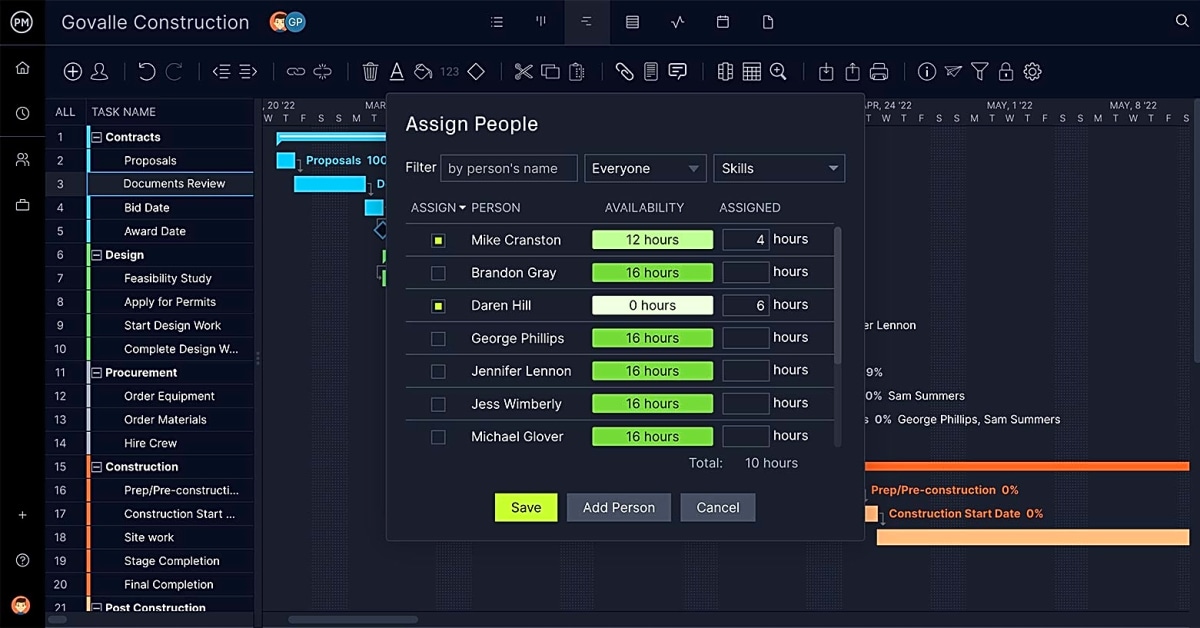Welcome to our comprehensive guide on defining project scope for business management. As a project manager, understanding and defining the scope of a project is crucial for its success. Scope defines the boundaries and limitations of a project, outlining what will and will not be included. It sets the foundation for all project planning and execution, making it a critical aspect of project management.In this article, we will dive into the concept of project scope and provide you with a step-by-step guide on how to define it effectively. Whether you are new to project management or looking to refresh your knowledge, this guide will provide you with the essential information and tips you need to define project scope like a pro.We will cover everything from the definition of project scope to the importance of defining it, common challenges in scope definition, and best practices for successful scope management. So, if you want to ensure your projects stay on track and deliver the desired results, keep reading. By the end of this article, you will have a solid understanding of how to define project scope and its impact on project success.This guide is part of our Silo on Project Management and Project Planning, where we provide valuable resources and insights on all aspects of project management. So, whether you are a seasoned project manager or just starting out, be sure to explore our other articles for more valuable information. Now, let’s dive into the world of project scope and learn how to define it for your projects.
As a business owner or manager, you are constantly seeking ways to improve your skills and strategies in order to run a successful business. This includes understanding and defining project scope. In this article, we will cover all aspects of defining project scope in the context of business management.
Firstly, let’s define what project scope is. Project scope refers to the boundaries and limitations of a project – what will be included and what will not be included. It is an essential aspect of project planning as it sets the foundation for the project and helps to ensure its success. By clearly defining the scope of a project, all stakeholders can have a clear understanding of what is expected and what the end goal is.
Defining project scope involves identifying the objectives, deliverables, and timelines of a project. It also includes outlining any constraints or limitations that may affect the project, such as budget, resources, or external factors. Having a well-defined project scope helps to avoid scope creep, which is when additional tasks or requirements are added to a project outside of its original scope. This can lead to delays, increased costs, and potentially jeopardize the success of the project.
In order to define project scope effectively, it is important to involve all stakeholders in the process. This includes the project team, clients, and other relevant parties who may be impacted by the project. By involving all stakeholders, you can ensure that everyone is on the same page and has a shared understanding of what the project entails. This can help to prevent misunderstandings or conflicts down the line.
Another important aspect of defining project scope is managing expectations. It is crucial to clearly communicate what is within the scope of the project and what is not. This can help to avoid any misunderstandings or disagreements with stakeholders. It also allows for more accurate project planning and estimation of resources and costs.
Defining project scope is an ongoing process that should be revisited and updated throughout the project lifecycle. As the project progresses, changes may occur that require adjustments to the project scope. It is important to have a process in place for managing these changes and ensuring that they align with the overall goals and objectives of the project.
In conclusion, defining project scope is a crucial aspect of project management and business management. It sets the foundation for a successful project and helps to ensure that everyone involved is on the same page. By clearly defining the scope of a project and managing expectations, businesses can avoid scope creep and increase their chances of success.
Understanding Project Scope
In this section, we will dive deeper into the concept of project scope and why it is important for business management.
Key Elements of Project Scope
Next, we will discuss the key elements that make up project scope and how they contribute to the overall success of a project.
Tools and Techniques for Defining Project Scope
In order to define project scope effectively, it is important to have the right tools and techniques at your disposal. These can help you gather and analyze information, as well as communicate your project scope clearly to stakeholders.
One useful tool for defining project scope is a work breakdown structure (WBS). This involves breaking down the project into smaller, more manageable components, which can then be further broken down into tasks and activities. This helps to clarify the scope of the project and identify any potential gaps or overlaps.
Another helpful technique is the use of visual aids, such as flowcharts or diagrams. These can help to illustrate the various components and relationships within the project scope, making it easier for stakeholders to understand and provide feedback.
Communication tools, such as stakeholder interviews or surveys, can also be valuable in defining project scope. These allow you to gather input from key stakeholders and ensure that their expectations are aligned with the project scope.
Finally, project management software can be a useful tool for defining project scope. These tools often include features such as task lists, timelines, and collaboration tools, which can aid in defining and managing project scope.
Defining Project Scope
As a business owner or manager, it is crucial to have a clear understanding of the scope of your projects in order to ensure their success. Defining project scope involves identifying and outlining all the tasks, deliverables, and goals that need to be accomplished in order to complete a project.
Here, we will go through the steps involved in defining project scope and provide tips on how to do it effectively. By following these guidelines, you will be able to set clear boundaries, manage expectations, and avoid potential issues that can arise during a project.
Step 1: Identify the Project Objectives
The first step in defining project scope is to clearly identify the objectives of the project. This includes understanding the purpose of the project, what it aims to achieve, and how it aligns with your overall business goals.
Step 2: Define Deliverables
Next, you need to define the specific deliverables that are expected from the project. These can include products, services, reports, or any other tangible outcome that needs to be produced as a result of the project.
Step 3: Determine the Project Timeline
A project timeline is crucial in defining project scope as it helps set realistic expectations for when each deliverable will be completed. This also allows for better planning and resource allocation.
Step 4: Identify Project Constraints
Constraints such as budget, resources, and time can impact the scope of a project. It is important to identify and communicate these constraints early on in the project planning process.
Step 5: Communicate and Collaborate
Defining project scope requires open communication and collaboration among all stakeholders involved. This ensures that everyone is on the same page and understands the project objectives, deliverables, and constraints.
By following these steps and effectively defining project scope, you can set your project up for success and avoid potential issues down the line. Remember to regularly review and update the project scope as needed to keep it aligned with your business goals and objectives.
Common Challenges in Defining Project Scope
When it comes to managing a project, one of the most crucial steps is defining its scope. This involves outlining the goals, objectives, deliverables, and boundaries of the project. However, this process can often be challenging for businesses, especially for those who are new to project management.
One common challenge in defining project scope is dealing with scope creep. This refers to the continuous expansion of a project’s scope without proper authorization or planning. It can result in increased costs, delays, and decreased quality of work. To avoid scope creep, it is important to have a clear understanding of the project’s goals and objectives, and to communicate any changes or additions to the scope with all stakeholders.
Another challenge is setting realistic expectations. Businesses may struggle with defining project scope when they have unrealistic expectations for what can be achieved within a given timeframe or budget. It is important to have open and honest communication with clients or stakeholders to ensure that everyone is on the same page about what can be realistically accomplished.
Lastly, businesses may face challenges in prioritizing project requirements. With limited time and resources, it can be difficult to determine which requirements are essential and which can be left out. To overcome this challenge, it is important to involve all stakeholders in the decision-making process and prioritize based on the project’s goals and objectives.
Defining project scope is crucial for business management as it sets the boundaries and limitations of a project, ensuring its success. By understanding the key elements and utilizing the right tools and techniques, you can define project scope effectively and overcome any challenges that may arise.






